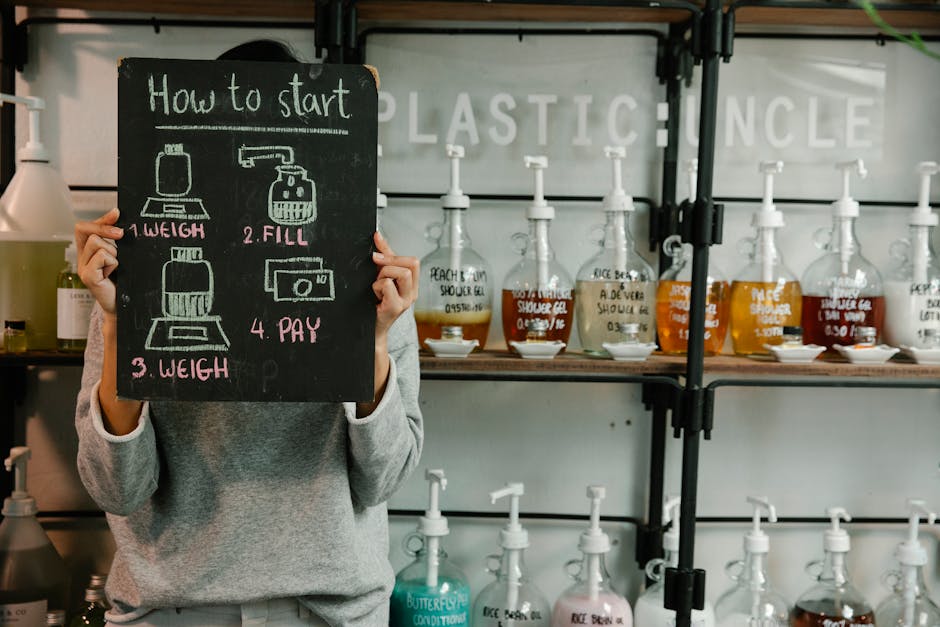The Ultimate Guide: How to Shop for Eco-Friendly Brands
When it comes to making purchasing decisions, more and more consumers are looking to support brands that prioritize sustainability and environmental responsibility. The rise of eco-conscious shopping has led to a growing demand for products that are not only high quality but also have a minimal impact on the planet. But with so many brands claiming to be eco-friendly, how can you separate the green from the greenwashing? In this comprehensive guide, we will explore the ins and outs of shopping for eco-friendly brands, from understanding certifications to deciphering labels and making informed choices. Let’s dive in!
Understanding Eco-Friendly Shopping

Before we delve into the nitty-gritty of eco-friendly shopping, let’s first define what it means to be eco-friendly. Eco-friendly, also known as environmentally friendly or green, refers to products, services, or practices that have a minimal impact on the environment. This can include using sustainable materials, reducing waste, conserving energy, and supporting ethical labor practices.
When it comes to shopping for eco-friendly brands, there are several key factors to consider:
Researching Eco-Friendly Brands

One of the first steps in shopping for eco-friendly brands is to do your research. Look for companies that are transparent about their sustainability practices, such as sourcing materials responsibly, reducing carbon emissions, and supporting fair trade. Many eco-friendly brands will have information on their website about their commitment to the environment, so be sure to look for these details.
Additionally, you can use resources such as EcoLabel Index or certifications like Fair Trade Certified, USDA Organic, or Forest Stewardship Council (FSC) to identify brands that meet specific environmental standards. These certifications can help you make more informed decisions when choosing products that align with your values.
Deciphering Eco-Friendly Labels

When shopping for eco-friendly brands, it’s essential to understand the labels and certifications that companies use to showcase their commitment to sustainability. Some common eco-friendly labels to look for include:
1. Organic: Products that are labeled as organic are made without the use of synthetic pesticides, fertilizers, or genetically modified organisms (GMOs). Look for certifications like USDA Organic to ensure that the product meets strict organic standards.
2. Fair Trade: Fair trade products are sourced from producers who receive fair wages and work in safe conditions. Look for certifications like Fair Trade Certified to support companies that prioritize ethical labor practices.
3. Recycled: Products that are labeled as recycled are made from materials that have been diverted from the waste stream and repurposed into new products. Look for certifications like Recycled Content to ensure that the product contains a significant percentage of recycled materials.
Choosing Sustainable Materials

One of the key factors to consider when shopping for eco-friendly brands is the materials used in the products. Sustainable materials are those that are sourced and produced in a way that has a minimal impact on the environment. Some common sustainable materials to look for include:
1. Organic Cotton: Organic cotton is grown without the use of synthetic pesticides or fertilizers, making it a more sustainable option than conventional cotton. Look for clothing brands that use organic cotton in their products.
2. Bamboo: Bamboo is a fast-growing and renewable resource that requires minimal water and pesticides to grow. Look for products made from bamboo, such as bamboo clothing or bamboo utensils.
3. Recycled Polyester: Recycled polyester is made from post-consumer plastic bottles and other recycled materials, reducing the need for virgin polyester production. Look for clothing brands that use recycled polyester in their garments.
Supporting Ethical Practices
In addition to choosing products made from sustainable materials, it’s essential to support brands that prioritize ethical labor practices. Look for companies that provide fair wages and safe working conditions for their employees, as well as those that support local communities and artisan craftsmanship.
One way to ensure that you are supporting ethical practices is to look for certifications like Fair Trade Certified or B Corp. These certifications indicate that the company has met specific standards for social and environmental performance, accountability, and transparency.
Calculating Carbon Footprint
Another important aspect of shopping for eco-friendly brands is calculating the carbon footprint of the products you purchase. A carbon footprint is the total amount of greenhouse gases, primarily carbon dioxide, that are emitted during the production, transportation, and disposal of a product. By choosing products with a lower carbon footprint, you can reduce your impact on the environment.
There are several tools and resources available that can help you calculate the carbon footprint of products, such as carbon calculators or websites like Carbon Trust. By understanding the carbon footprint of the products you buy, you can make more informed choices and support brands that are taking steps to reduce their emissions.
Expert Opinions
We reached out to sustainability expert, Dr. Emily Green, for her insights on shopping for eco-friendly brands. According to Dr. Green, “When shopping for eco-friendly brands, it’s important to look beyond the label and consider the company’s overall commitment to sustainability. Look for brands that are transparent about their practices, use sustainable materials, and support ethical labor practices.”
Dr. Green also emphasizes the importance of doing your research and staying informed about the latest trends in sustainable shopping. By taking the time to educate yourself and make conscious choices, you can make a positive impact on the environment and support brands that are working towards a more sustainable future.
Common Misconceptions
There are several common misconceptions when it comes to shopping for eco-friendly brands. One of the most significant misconceptions is that eco-friendly products are always more expensive than conventional products. While it’s true that some eco-friendly products may have a higher upfront cost, they often last longer and have a lower environmental impact in the long run.
Another common misconception is that eco-friendly products are not as effective as conventional products. In reality, many eco-friendly brands prioritize quality and performance, using innovative materials and processes to create products that are both sustainable and high-performing.
Comparative Analysis
When comparing eco-friendly brands, it’s essential to consider a range of factors beyond just the environmental impact. Look for companies that are transparent about their sustainability practices, use high-quality materials, and prioritize ethical labor practices. Consider the company’s overall commitment to sustainability, as well as the certifications and labels they use to showcase their eco-friendly credentials.
Additionally, consider the longevity and durability of the products, as well as the company’s social impact and community involvement. By taking a holistic approach to comparing eco-friendly brands, you can make more informed choices and support companies that align with your values.
FAQs
Q: Are eco-friendly products more expensive than conventional products?
A: While some eco-friendly products may have a higher upfront cost, they often last longer and have a lower environmental impact in the long run.
Q: How can I find eco-friendly brands that align with my values?
A: Look for companies that are transparent about their sustainability practices, use sustainable materials, and support ethical labor practices. You can also use resources like certifications and labels to identify eco-friendly brands.
Conclusion
To wrap things up, shopping for eco-friendly brands is an important step towards a more sustainable future. By doing your research, understanding labels and certifications, choosing products made from sustainable materials, and supporting ethical practices, you can make a positive impact on the environment and support companies that are working towards a more sustainable future.
Remember, every purchase you make is a vote for the kind of world you want to live in. By choosing eco-friendly brands, you are not only supporting the planet but also making a statement about your values and priorities. So next time you’re out shopping, think about the impact your choices have and choose to support brands that are making a difference. Happy shopping!




